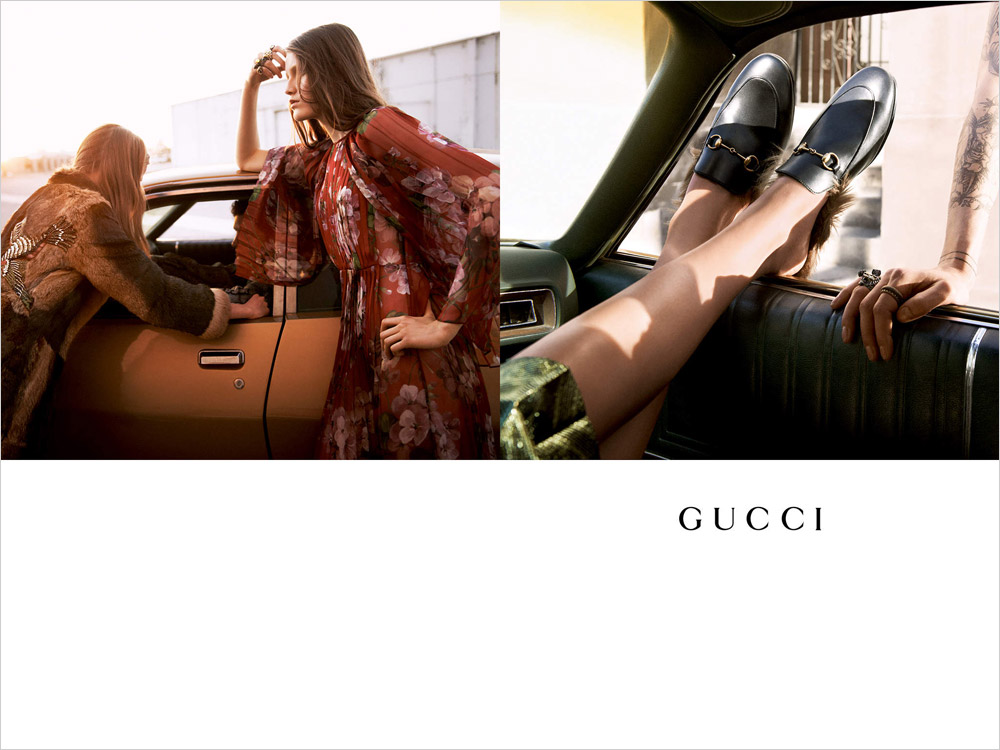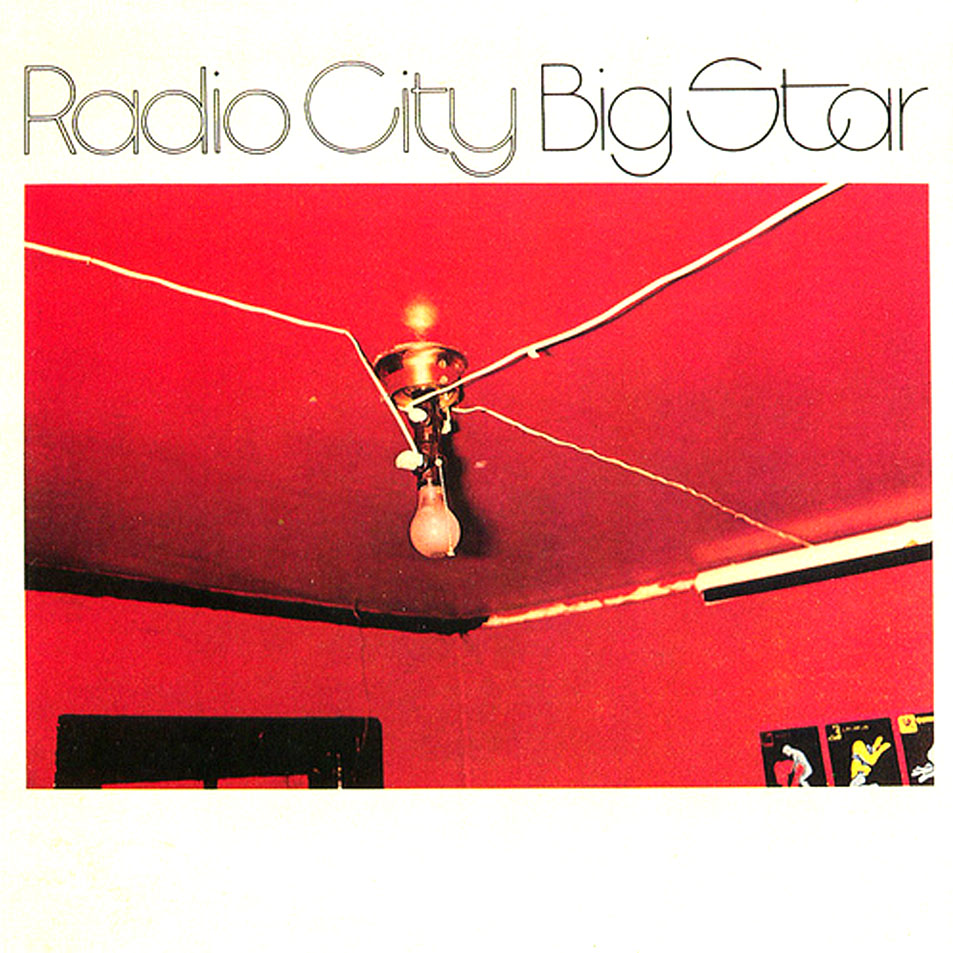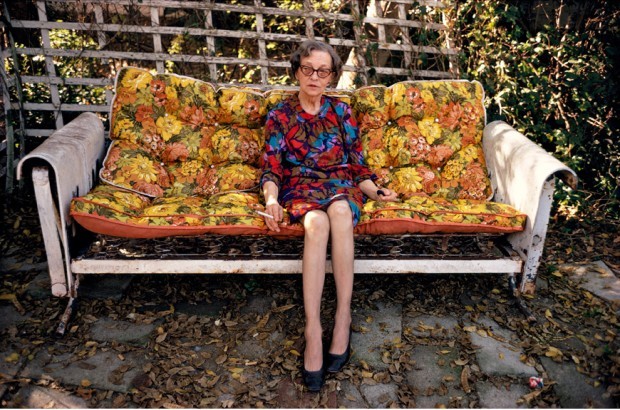IZZY BUCKLOW reviews William Eggleston’s retrospective at the National Portrait Gallery and explores his enduring allure.
William Eggleston is in the air. His is not a familiar name; I am ashamed to admit that until very recently I had never heard of him. Regardless, you will most definitely have felt his presence, and his retrospective at The National Portrait Gallery taps into our current nostalgia for all things 1970s.
Many of us will have already binged on the new Netflix series ‘The Get Down’. We have boogied the night away listening to disco in South London and entered a popular high street shop to be overwhelmed by a selection of Wrangler tees, flares and the inevitable flouncy blouse. We are distanced from the source of this nostalgia, and consequently, upon seeing the real thing in this exhibition, it is not initially clear what is so very innovative. When I first saw Eggleston’s work I felt as though I had already seen it. These photographs aren’t an Urban Outfitters faux-suede skirt: Eggleston is the original and his is the style that has been highly referenced.

The strawberry toned filter that illuminates Eggleston’s shot of Marcia Hare sprawled on the grass in a floral dress, saturated by the warm glare of the sun, inspired Sophia Coppola’s 1999 film adaptation of ‘The Virgin Suicides’: Coppola frames her heroine Lux Lisbon in a very similar composition. To quote Jeffrey Eugenides (the author of Virgin Suicides) ‘What we have here is a dreamer. Somebody out of touch with reality. When she jumped, she probably thought she’d fly’. Looking at Marcia Hare’s outstretched arms it is almost as if Eugenides had Eggleston’s image in mind when he wrote this.

The list of filmmakers influenced by Eggleston is high-profile: The Coen brothers, Terrence Malik, Wes Anderson, David Lynch and Wim Wenders have each picked up on a different element of the Eggleston aesthetic, the American motels and diners, the saturated colours, the voyeurism and the eeriness.

Eggleston’s influence also extends to the fashion industry. We are currently in the throes of Glen Luchford and Alessandro Michele’s complete image upheaval for Gucci; they are breaking away from the glossy, edited campaigns of yesteryear towards a more whimsical approach with a sense of movement, feeling and mystery… look familiar?

Eggleston’s photographic approach moves beyond the mere representational capacity of the camera. He does not simply record or document society, but rather observes the transitory flashes of everyday moments. The commonplace can originally associated with Duchamp, who coined the term ‘objet trouvé’: the scene, or ‘real life’ is there in front of you, the photographer simply captures it. Duchamp’s modernist philosophy was picked up by Eggleston, who similarly selected a products seen in life and transformed them to provoke new thoughts.

Photographer Ansel Adams (working a generation before Eggleston) believed photography should bear the trace of the human hand, whereas Eggleston and Duchamp stripped away the controlling will: they obliterated signs of their presence to open up a space for reflection. Eggleston took his cues from all the progressive thinkers before him; from the voyeuristic viewpoints of realist painter Hopper (whose alienated sitters are enveloped in artificial lighting), to the psychological power of Hitchcock’s mise en scène and Henri Georges Clouzot’s experiments in colour, seen in his unfinished classic L’enfer. He moved away from fellow Americans Adams and Weston to adopt a European spontaneity pioneered by Cartier Bresson and his ‘decisive moment’.

Eggleston’s defining feature is his effortless transition from black and white to colour photography, which grew in dominance throughout the seventies. Unlike screen actors who moved from silence to sound and were found lacking in vocal strength, Eggleston mastered new developments, which is why some of the photographs in the exhibition look strikingly modern. He is best known for his dye transfer technique which is similar to the technicolour used in cinema. The process allows for vivid, highly saturated colour because the tone is created by a dye and not a photographic chemical, creating deep pigmented planes that conjure up the joyous world of the great colourist Henri Matisse. Before Eggleston’s innovations colour photography was most commonly used for photojournalism and advertising and thus was associated with a lower, commercial cultural world. This is the same old story of the intellectual ‘disegno’ (premeditated draughtmanship) being favoured over the sensual ‘colore’ (spontaneous application of colour and shape) that gave rise to these terms during the Renaissance. Even Eggleston’s hero Cartier Bresson considered colour to be ‘vulgar’.

This is what is what is so spectacular about this exhibition. It gives us a snapshot into the world of a man who was not afraid to break conventions, who saw beauty in the vulgar, who fused line and colour, intellect and sensuality. Both his work and its subjects have seeped into our collective subconscious. The National Portrait Gallery has chosen to exhibit a selection of only portraits, editing out his still lives. The human presence of these images connects us to the photographs more than a collection of objects could. We can project ourselves into the image, create stories and emotional journeys: each photograph could be a still from a full length movie. It is lucky the exhibition is so small and well-edited because every image has the capacity to captivate for hours.
William Eggleston ‘Portraits’ is open to the public at The National Gallery until the 23rd of October.





